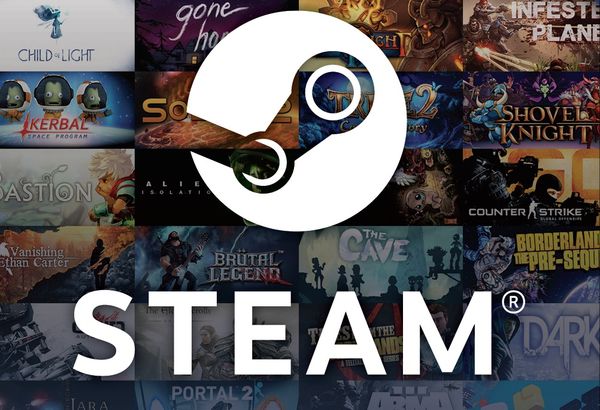Social Networks Bitten by the Same Scam Bug(s)

New social networks face classic scams, boundaries between platforms blur
Pinterest’s public acknowledgement that it is “not immune to challenges faced by sites across the web including spam and phishing” raises the question of whether online social startups can and will learn from their predecessors’ troubles. Two directions are worth exploring here: baits and sharing mechanisms.
Social scams exploit human, rather than platform, vulnerabilities. This has made it possible for classic baits such as leaked sex-tapes and gift cards – giveaways to hit it big on all three major social networks of the moment.
On the other hand, platform-specific sharing mechanisms – shares, likes, re-tweets or re-pins – can be automated. Providing artificial follower or fan boosts is a longstanding and lucrative online business. A whole army of bots or human enablers promise to perform mass-like sharing operations and to pump up traffic in various users’ accounts.
As sharing is the key word here, let’s take a look at how the Facebook, Twitter and Pinterest crowds partake in the social scam niceties.
Baits
Pinterest appears to share most scam baits with Facebook, mainly because the newest member of the online social club relies almost exclusively on visual content. The first signs of this “kinship-in-scam”are already visible as fake gift card schemes, for instance, recently entered the pinning scene.
Scammers are quite talented at re-shuffling their cards and laying out surprising combinations. One of the most interesting so far is a scam on Facebook advertising a gift card giveaway which allegedly takes place on Pinterest.
An earlier case of cross-platform scam made use of Facebook ads to take Pinterest users into a quiz maze disguised, again, as a gift card giveaway.
If the joint bait trend has started blurring boundaries between social platforms, this dispatch of victims from one platform to the other adds a second degree of severity to this process.
One of the most predictable consequences is that other visually intensive scams will likely thrive on Pinterest. This would be the case of charity or animal abuse-themed hoaxes. Though some would expect scams spreading through x-rated images to break out on Pinterest as well, the fact that most Pinterest users are women will probably lower the chances of pornographic images flooding pin boards. Then again, given the incredibly rapid growth of Pinterest`s user base, its gender breakdown may change. The salaciousness of the scam pins to come might surpass everyone’s expectations.
On the plus side, the pin board of the moment might just escape the “hot event of the day” scam trend that ravaged Facebook and Twitter since their beginning. Those two platforms place a high focus on real-time status updates, while Pinterest is less likely to be seen as a source of breaking-news. The “pin it” concept puts activities on this new platform in the “memory”, “preservation” or “collector” area.
One of the most prolific scams on Facebook is closely connected to the changes the platform creators brought to users’ accounts. The radical overhaul that saw the Timeline introduced has already ensured a long and successful career to “Remove Timeline” or “Good bye Blue Facebook” tricks. On Twitter, on the other hand, account customization options are available right from the start, so that the appeal of unauthorized tools aiming to do just that is next to zero. Only time will tell what happens to Pinterest from this point of view.
What about other Facebook scam classics? The infamous “See who viewed” your profile, which migrated fairly easy to Twitter, might just not be “the thing” for Pinterest fans. Pinterest works on â”surround visibility”Â, meaning that almost anyone can view anyone’s pin boards, a characteristic which kills spy tools’ chances. Speaking of classics, Pinterest users might give in to the temptation of offers of statistics concerning their activity. A possible variant of the “how long have you spent on Facebook/Twitter” would look at the number of pins or at the speed with which content is posted on pin boards. All three major platforms are doomed to be struck by the statistics craze.
Mechanisms
The more visible you are or seem to be on your social network, the more likely you will be considered an influential member of the community and an efficient endorser of a brand, product or service. Except for the rare cases in which controversy turns you into a prominent online socialite in an instant, going after a sizeable readership or followership takes a lot of work and time. As users express the need for a way to do these things faster, the online corner-cutting business is born.
This relatively new breed of internet marketing entrepreneurship is quite successful on Twitter: free and paid services promise instant follower boosts provided, in some cases, that you disclose your account credentials to the service providers.
Once you put aside ethical questions and give your account virtual steroids, breaking the basic safety rule of keeping passwords to yourself doesn’t sound as bad. Moreover, the legal documentation behind follower-boost initiatives says stored credentials will not be sold, traded or otherwise disposed of. In the online world, though, that’s an unknown person’s promise.
On Facebook, the trading of bulk fans is going strong as well. The trick behind it seems to be that the service provider only points people to a page they might be interested in, the actual LIKE being a matter of personal option. This is not immediately clear from the wording of the texts advertising fan boosting services; on the contrary, these texts stress the fact that all gathered fans are real.
As Pinterest made a triumphant entrance in the social network world – its user base apparently exceeding that of Google+, LinkedIn and YouTube combined – automatic pinning and repining have become the new obsessions of the traffic boost industry. One of the first traffic boost tools designed for Pinterest (courtesy of a Romanian programmer) is being advertised these days. Each customer is supposed to pay 79$ for his/her own license to use the tool – called the Pin Blaster – and receive a bonus Pin Grabber. According to the tool description, the Pin Blaster provides â”Mass Like Pins” and “Mass Pin Comments”Â, among others, while the Pin Grabber aims to help “gather the hottest images from Pinterest and 9gag” and “mass export them for Pin Blaster and post them on your blog.”
Another striking similarity between Facebook and Pinterest sharing mechanisms is related to Pinterest users’ ability to add collaborators to their boards without the persons’ consent. As pointed out by Daily Dot, this feature may enable scammers to add famous collaborators to their boards so they can serve malicious content to the star’s followers. This scheme rings a very loud bell in the minds of social media security fans. It’s very similar to the Facebook page admin scam, which relied on various users being notified that they have been made administrators of a Facebook page from which they would be redirected to a phishing trap.
A noteworthy Twitter and Pinterest similarity relied on both platforms @ name of user mention system. Mention spam has already made it to the 140 character crime encyclopedia. Pinterest bound spammers don’t shy away from using the same technique by mentioning hoards of users in comments to spam bot’s pins.
All product and company names mentioned herein are for identification purposes only and are the property of, and may be trademarks of, their respective owners.
tags
Author
Ioana Jelea has a disturbing (according to friendly reports) penchant for the dirty tricks of online socialization and for the pathologically mesmerizing news trivia.
View all postsRight now Top posts
Start Cyber Resilience and Don’t Be an April Fool This Spring and Beyond
April 01, 2024
Spam trends of the week: Cybercrooks phish for QuickBooks, American Express and banking accounts
November 28, 2023
FOLLOW US ON SOCIAL MEDIA
You might also like
Bookmarks
















